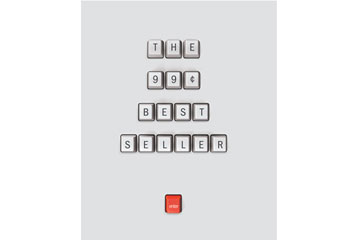
(2 of 8)
Since 2006, annual production of self-published titles has more than tripled, according to the research firm Bowker, and it now tallies more than 200,000; within that category, e-book self-publishing is growing at a rate nearly four times that of print. To a growing movement of indie authors--many of them working in pulpy genres like mystery, fantasy and romance--self-publishing is no longer a mark of shame but a route to freedom, affirmation and a potentially vast pool of readers: buyers who are willing to risk a few dollars on an unknown author who doesn't happen to meet the (often opaque and arbitrary) standards of traditional publishing houses.
At the convention, a middle-aged woman in a peach sweater raised her hand and asked Coker whether self-publishing was preferable to dealing with "New York." Indie authors use New York as shorthand for the world of literary agents and editors--like Moscow in a spy novel, a seat of forbidding power. "The quality of information that is out there today is unprecedented," Coker replied. "You have the ability to be a more successful, more professional publisher than most traditional publishers. You have the opportunity to go out there and control your destiny, set your own prices, experiment ... The secrets to successful publishing are being written by authors like you."
The questioner, Sheryl Hoyt, walked out of the talk bubbling with excitement. Over the years she had completed five romance manuscripts, written on the bus to her full-time job in Seattle, over lunch breaks and on her couch after dinner. After years of struggling to interest publishing houses, she finally decided to go it alone, adopting a pen name--SaraLynn Hoyt--and uploading two novels, priced at $3.99, to Smashwords, Amazon and barnesandnoble.com "I can't wait to see," Hoyt wrote on her Amazon biography page, "what we all do with this newfound power next."
The convention, held less than a month into her life as a published author, offered Hoyt an opportunity to learn, network and promote her books. A chatty, petite brunette, she arrived with thousands of glossy business cards bearing the voluptuous cover art for her books, Dangerous Heart and The Scoundrel and the Saint. She and her conference roommate, Deborah Schneider, dressed up in Victorian ensembles to grab attention at a book fair, where they handed out coupons for free downloads to a mob of romance fans.
By giving books away, the authors hoped to gain visibility and precious reader reviews, bumping themselves up in sales rankings and search results. Schneider tells me she was shocked when, via the mysterious alchemy of the algorithm, sales of her western-themed romance Beneath a Silver Moon suddenly took off last year. She made an Amazon best-seller list, where sales become self-reinforcing. One day Hoyt visited her friend's house, and Schneider showed off her latest month's proceeds: more than $2,000, 70% of which she kept under Amazon's revenue-sharing deal for self-publishers.
"I just went, 'Oh my God, look at how much money she's making,'" Hoyt says. "Now's the time."
The 70% Solution
